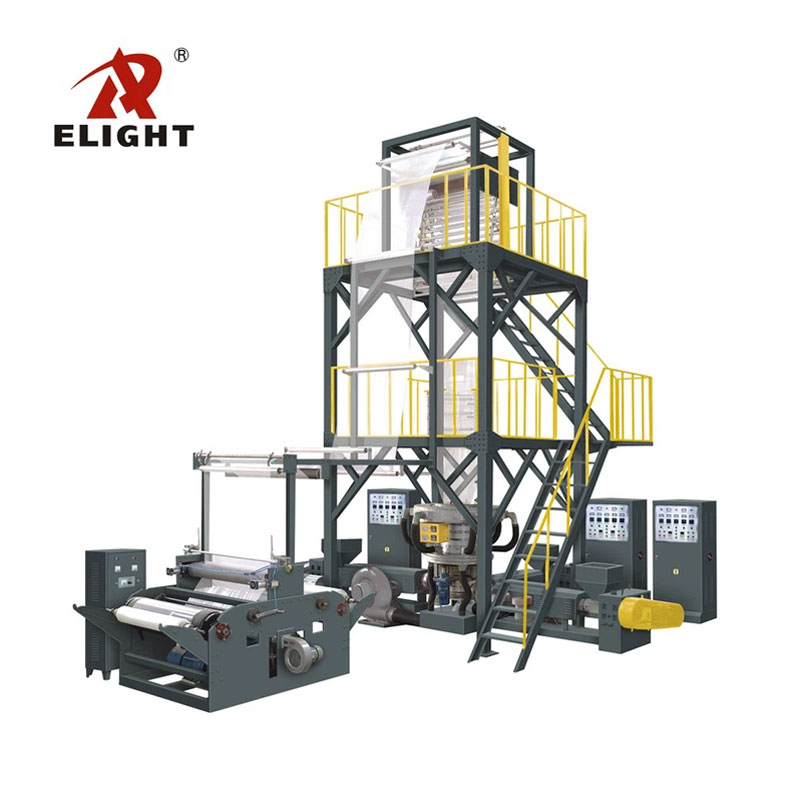 21 Sep 2023
21 Sep 2023The role of PE film blowing machine is to heat and melt plastic particles into the film we need. It is mainly composed of nine parts: motor, screw, barrel, die head, frequency converter, v plate, wheel, smooth wheel, wheel and winding.
Generally divided into pe film blowing machine, POF film blowing machine, pvc film blowing machine three, the film produced by the Plastic film blowing machine is mainly used for a variety of high-grade film packaging.

The role of PE film blowing machine is to heat and melt plastic particles into the film we need. It is mainly composed of nine parts: motor, screw, barrel, die head, frequency converter, v plate, wheel, smooth wheel, wheel and winding. Generally divided into pe film blowing machine, POF film blowing machine, pvc film blowing machine three, the film produced by the film blowing machine is mainly used for a variety of high-grade film packaging.
The film blowing machine is a common equipment used in the plastic film industry to produce plastic films of various thicknesses and widths.
Material Preparation:
The raw material, usually in the form of plastic pellets or granules, is loaded into a hopper attached to the machine.
Melting and Extrusion:
The material is fed into a screw extruder, where it is heated and melted. The rotating screw conveys the molten plastic through a barrel, applying pressure and increasing the temperature to ensure uniform melting.
Film Formation:
The molten plastic is then forced through a circular die at the end of the extruder. The die has a small opening called the "die gap" that determines the thickness of the film. As the molten plastic exits the die, it forms a cylindrical bubble.
Bubble Expansion:
Air is introduced into the center of the bubble, causing it to inflate and expand in size. The air pressure inside the bubble helps maintain its shape and thickness.
Cooling and Solidification:
The inflated bubble passes through a cooling section, where cool air or water is blown onto the film to solidify it. This ensures that the film retains its desired dimensions and properties.
Take-off and Winding:
Once the film has cooled and solidified, it is pulled away from the die by nip rolls or other take-off mechanisms. The film is then wound onto a roll or cut into desired lengths, depending on the application.
Throughout the process, various parameters such as extrusion temperature, air pressure, cooling rate, and take-off speed can be adjusted to control the properties of the film, including thickness, transparency, strength, and surface finish. The film blowing machine allows for continuous production of plastic films with high efficiency and versatility.

GET A QUOTE